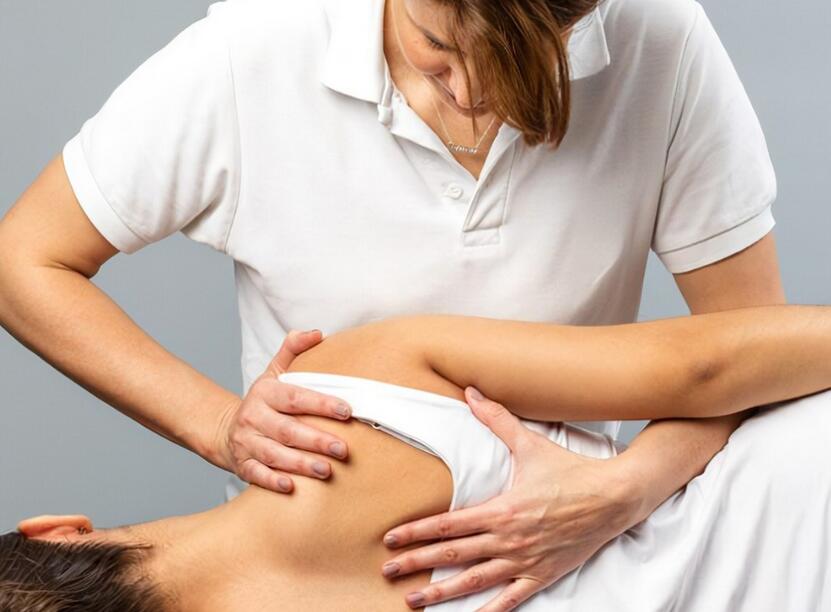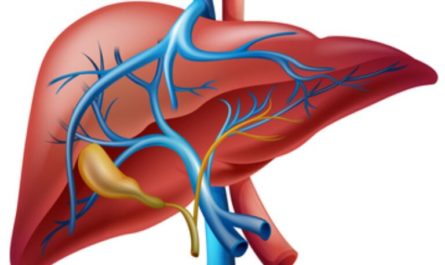Right shoulder pain is one of the most common pains for athletes, drivers, or people working at a computer all day. When you suffer from this pain, you may be unable to perform normal activities. Every movement that you make becomes difficult and painful.
In most cases, the pain goes away on its own after a period of time, but sometimes it may get worse. If your pain doesn’t go away or have other symptoms, please seek the advice of a doctor as soon as possible.
But before that, you’d better understand the cause of shoulder pain first. This article covers everything you need to know about right shoulder pain, from its various causes to treatment options.

14 Common Causes of Right Shoulder Pain
There are many reasons for right shoulder pain, and here are some common causes.
1. Rotator cuff injuries
A rotator cuff is a group of four muscles that hold the shoulder joint together. It also helps in lifting the arm up and behind the back. The rotator cuff is often injured in people who work at a computer, those who drive a lot, or athletes.
A rotator cuff injury causes severe pain in the right shoulder and might not allow you to perform your normal activities. The pain may be constant or may come and go.
Rotator cuff injuries are more common in people above 40 years of age. A rotator cuff injury can be treated with rest, ice, and medicines. If you suspect a rotator cuff injury, you should consult a doctor and follow his instructions.
2. Rotator Cuff Syndrome
Rotator cuff syndrome is one of the most common causes of right shoulder pain. The pain is usually felt in the back of the shoulder and can spread to the upper arm and forearm.
It may also radiate to the front of the shoulder and the upper chest. It is usually worse when lifting your arm above shoulder level. Rotator cuff syndrome can be due to strained muscles or the tendon that stabilizes the shoulder joint. Rotator cuff syndrome is most common in people aged 40 to 60. It can affect anyone, including athletes who do a lot of throwing.
3. Arthritis
The shoulder joint may become stiff due to arthritis, causing much pain and difficulty in movement. You may feel pain in the right shoulder when you try to lift your arm or move it in a specific direction. The pain may increase with time and may not subside even when you rest.
If you have arthritis in the shoulder, you may experience stiffness in the joint. You may also have difficulty moving the joint, especially in the morning. When arthritis affects the shoulder joint, it may cause an increase in the number of painful episodes in the joint.
Arthritis can be detected by blood tests and X-rays. You should get tested for arthritis if you experience severe shoulder pain, especially when moving your arm.
4. Frozen shoulder
A frozen shoulder is a condition that causes pain, stiffness, and difficulty in movement in the shoulder. The pain may worsen when you move the shoulder, especially the arm. The pain may be constant or come and go. When you try to lift the arm, it may get stuck in a particular position.
A frozen shoulder causes a change in the structure of the shoulder joint. You may experience weakness in the shoulder muscles. A frozen shoulder may occur due to a disease or injury.
You may also experience a frozen shoulder if you have arthritis in the shoulder joint. A frozen shoulder can be treated by performing physical therapy. You can also take medicines to relieve pain and promote healing.
5.Calcific tendinitis
Calcific tendinitis is a condition where calcium crystals form in the tendons around the shoulder and cause pain. The shoulder joint may also get affected due to this disease.
Calcific tendinitis is primarily seen in middle-aged women who exercise regularly. If you experience right shoulder pain, stiffness, and inability to lift the arm, you may have calcific tendinitis.
Blood tests, X-rays, and ultrasounds can diagnose calcific tendinitis. Treat this condition by resting, applying ice, and taking pain-killing medicines.
6. Osteoarthritis
Osteoarthritis is a degenerative condition that causes joint pain and stiffness. When the cartilage between the joints breaks down, it causes the joints to become stiff. This may lead to pain in the shoulder joint.
Osteoarthritis of the shoulder joint may cause pain in the shoulder when you lift or rotate the arm. Osteoarthritis can be detected by blood tests and X-rays. You can also get tested for this condition after experiencing shoulder pain for a long time. Osteoarthritis can be treated with physical therapy, exercise, and medicines.
7. Shoulder Injury
A shoulder injury may cause pain in the right shoulder. This injury is usually caused by a fall or a sudden jerk on the shoulder. A shoulder injury may occur due to a sports injury, a car accident, or a fall. This injury may take some time to heal. You may experience pain in the shoulder after a shoulder injury.
The pain caused by shoulder injury may be mild or severe. Additionally, you may experience a sensation of pins and needles in the hand. You may also experience difficulty in lifting the arm and moving it in specific directions.
A shoulder injury can be treated by resting, applying ice, and taking pain-relieving medicines. You should avoid moving the arm until the pain subsides. A shoulder injury may take months or even years to heal completely.
8. Bursitis
Bursitis is a degenerative disease that causes right shoulder pain and swelling in the joints. You may experience this condition in the shoulder joint and feel pain in the shoulder. You may also have swelling in the shoulder joint.
Bursitis can be caused by lifting heavy objects, sports injuries, or arthritis. This condition can also be hereditary. Bursitis can be treated by resting, applying ice, and taking pain-relieving medicines. You should avoid lifting heavy objects until the infection subsides.
9. Heart attack
A heart attack occurs when the blood flow to the heart muscle is blocked due to a clot. Heart attacks are life-threatening conditions that need immediate intervention. A heart attack can cause intense pain in the chest, back, arms, jaw, or upper abdomen.
This pain may extend to the left or right shoulder as well. If you experience pain in the shoulder after an extended period, you may have a heart attack. Seek medical attention if you experience this pain. You can also check your blood pressure and take medicines to reduce the risk of a heart attack.
10. Cervical radiculopathy
Cervical radiculopathy is a condition that causes pain in the neck and shoulder. The pain may extend to the arm and hand. You may have cervical radiculopathy when you experience pain in the shoulder and arm.
A sports injury, a car accident, or a fall can cause cervical radiculopathy. You can also develop this condition due to improper posture while working at a computer.
An MRI scan of the neck can diagnose cervical radiculopathy. You can treat this condition by applying heat, getting physiotherapy, and taking pain-relieving medicines.
11. Gallbladder Attack
Pain in the right shoulder could also be due to a gallbladder attack. Gallstones are small pieces of hardened bile that form in the gallbladder. The gallbladder is a small organ that stores and releases bile below the liver. Bile helps the body digest food.
If the bile becomes too thick, it can harden into stones. These stones may cause pain in the right shoulder if they become large enough. Pain is usually felt when the stones pass through the gallbladder and into the intestine. The pain is severe and can come and go. It is often accompanied by nausea, vomiting, sweating, and shakiness.
12. Fractured collarbone
A broken collarbone is a common injury among athletes, especially those who play contact sports such as rugby, hockey, and American football. The break is usually in the middle of the bone, just above the breast tissue.
The pain is felt in the right shoulder and the top part of the right arm. It may accompany swelling in the right shoulder and arm and bruising.
The bone may be heard or felt snapping when the injury occurs. A hard impact is felt, and there may be a snapping or popping sensation. The arm is held close to the chest and appears bent. A person may also hear a popping sound as the bone breaks. A doctor should evaluate this sudden pain.
13. Bone spurs
A shoulder bone spur is a small growth that forms outside the shoulder joint. A joint spur is usually caused by aging, injury, or arthritis. The pain starts gradually and may be mild. It is felt in the shoulder and arm.
A doctor can do an X-ray and look at the tissues to determine whether you have a bone spur. Bone spurs are generally diagnosed when you are going through a physical examination. A doctor may also take an X-ray of your shoulder joint to confirm whether you have bone spurs.
14. Breast Cancer
Breast cancer is the most common cancer in women. This condition is the abnormal growth of cells in the breast tissue. The pain may be felt in both breasts. It is generally felt in the upper or inner portion of the breast. Sometimes, the pain may spread to the right shoulder blade.
Breast pain that persists for more than a few weeks is accompanied by swelling or changes in the breast (such as nipple discharge or retraction) or is associated with a new lump should be evaluated. Breast pain can have many causes, but if it comes on suddenly and is accompanied by other symptoms, you should see a doctor.

6 Best Exercises for Right Shoulder Pain
Below are the six best exercises that can help relieve right shoulder pain.
1. Shoulder External Rotation
The shoulder external rotation exercise targets the rotator cuff muscles, which play a crucial role in stabilizing the shoulder joint. To perform this exercise:
- Sit or stand with your back straight and shoulders relaxed.
- Hold a resistance band in both hands, keeping your elbows bent at a 90-degree angle.
- Keep your upper arms close to your body and slowly rotate your forearms outward, away from your torso.
- Return to the starting position and repeat for 10-15 repetitions.
2. Scapular Squeeze
The scapular squeeze exercise is excellent for improving scapular stability and strengthening the muscles between your shoulder blades. Here’s how you can do it:
- Stand tall or sit upright with your arms by your sides.
- Squeeze your shoulder blades together, imagining that you’re trying to hold a pencil between them.
- Hold the squeeze for 5-10 seconds, then release.
- Repeat this exercise for 12-15 repetitions.
3. Shoulder Flexion Stretch
The shoulder flexion stretch helps improve the flexibility of your shoulder muscles. To perform this stretch:
- Stand with your feet shoulder-width apart.
- Raise your right arm in front of you to shoulder height.
- Use your left hand to support your right elbow and gently push your right arm across your chest.
- Hold the stretch for 20-30 seconds, feeling a gentle pull in your shoulder.
- Repeat on the other side.
4. Resistance Band Rows
Resistance band rows are an effective exercise for targeting the muscles in your upper back and shoulders. To do this exercise:
- Securely anchor a resistance band to a sturdy object at waist height.
- Stand facing the anchor point, holding the band with both hands.
- Take a step back, creating tension in the band, and keep your arms extended in front of you.
- Pull the band toward your chest, squeezing your shoulder blades together.
- Slowly release back to the starting position and repeat for 12-15 repetitions.
5. Sleeper Stretch
The sleeper stretch is particularly beneficial for individuals suffering from shoulder impingement or tightness. Follow these steps to perform the sleeper stretch:
- Lie on your side with the affected shoulder facing upward.
- Bend your elbow at a 90-degree angle and rest your forearm on the surface.
- Gently push your forearm down towards the surface until you feel a stretch in your shoulder.
- Hold the stretch for 20-30 seconds, then switch sides and repeat.
6. YTWL Exercises
The YTWL exercises target the muscles in your upper back and shoulders, promoting better posture and shoulder stability. Here’s how to do it:
- Lie face down on an exercise ball or a flat bench, holding light dumbbells in each hand.
- For the “Y” position, raise your arms at an angle of 30 degrees from your body, forming the shape of the letter “Y.”
- For the “T” position, extend your arms straight out to the sides, forming the shape of the letter “T.”
- For the “W” position, bend your elbows to 90 degrees and pull your arms up, resembling the letter “W.”
- For the “L” position, bend your elbows to 90 degrees and keep your upper arms close to your body, forming the shape of the letter “L.”
- Perform 10-12 repetitions for each position.
When to See a Doctor
The sooner you see a doctor, the sooner you can start treatment. You should see a doctor if your shoulder pain is severe or causes you to miss work. You should also see a doctor if you have shoulder pain and one or more of the following symptoms:
- Weakness or numbness in the arm
- A sudden increase in swelling
- Change in color of the skin in the shoulder area
- Pain with high fever
- Shortness of breath or Trouble breathing
- Weight loss
- Injury or trauma to the shoulder
- A history of cancer in the breast or a family history of breast cancer
- New lump in the breast
- Recent diagnosis of diabetes, heart disease, or heart failure
If you notice a sudden change in your shoulder pain symptoms, you should go to the nearest medical facility immediately.
Conclusion
Right shoulder pain can be very frustrating if it interferes with your daily activities. It is essential to identify the cause of your pain and treat it accordingly. If you experience any severe symptoms listed above, seek medical help immediately.






